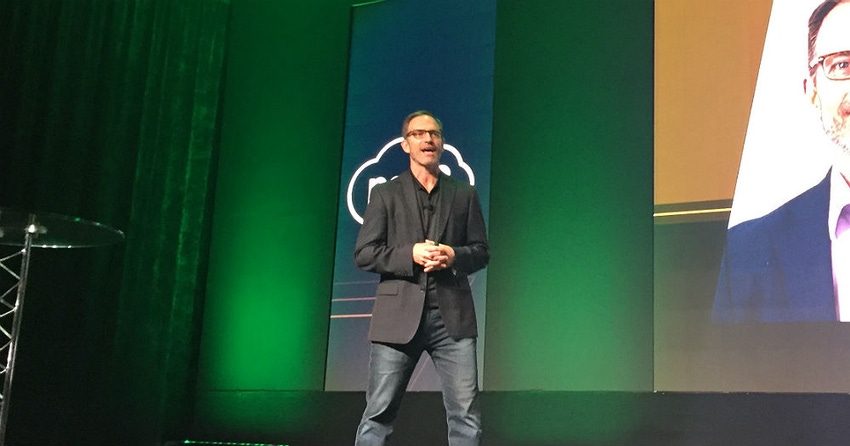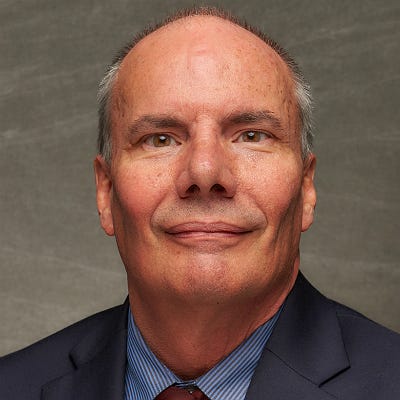GlueX: MSPs Must Have an M&A Strategy
Growing valuation should be a top priority among MSPs.

(Pictured above: Pax8’s Ryan Walsh on stage at IT Glue’s GlueX in Scottsdale, Arizona, Sept. 17.)
MSPs can reach a $1 billion valuation and make themselves an attractive M&A target by focusing on cloud and making changes in their overall operation and strategy.
That’s what Ryan Walsh, Pax8’s chief channel officer, told attendees Tuesday at GlueX, IT Glue‘s third annual user conference in Scottsdale, Arizona. Tuesday’s keynotes were chock full of advice for MSPs looking to gain more customers, grow revenue and prepare for M&A.
According to the latest IT Glue Global Benchmark Report, 55% of MSPs are either considering or are open to acquiring another MSP, while 74 percent are not considering being acquired. With M&A being a hot trend among MSPs, growing your valuation should be a top priority, Walsh said.
Most MSPs are generating no more than 25% in revenue from cloud services, while a poll of Pax8 partners showed just 6% generated 100% from cloud services, he said.
“That’s something to pay attention to,” Walsh said. “If you want higher valuation, this is what progressive firms are doing to get that valuation.”
The keys to reaching $1 billion include: focusing on specialization; playing to your strengths; implementing training; building the right team; standardizing your technology stack; and digitizing your business.
“Those MSPs who do specialize, they’re getting higher purchase prices,” Walsh said. “Focusing on specialization will help you win. Thirty-six percent of MSPs are specializing. As more and more MSPs are recognizing this is the way to more valuation, specialization is really increasing.”
As for playing to your strengths, Walsh said ask yourself what your company is known for, where am I thriving, what kind of expertise do I have in-house, and which service areas get the best client testimonials.
“Companies with comprehensive training programs have 24% higher profit margins,” he said. “You’re talking about repeatability [and] higher margins when doing that. The IT Glue benchmark also said attracting talent is one of the hardest things, and training programs can attract people. And it is the reason why somebody might stay with your company.”
Standardizing your technology stack reduces the offering’s complexity and helps streamline customer experience, Walsh said.
According to IDC, by 2022, 60% of the global gross domestic product will be digitized with growth in every industry, he said. It’s important for MSPs to digitize to drive this growth.
“Every business must take on this challenge or risk two-thirds of their addressable market vanishing by 2022,” Walsh said.
Paul Dippell, CEO of Service Leadership, illustrated the differences between high operational maturity level (OML) MSPs and lower OML MSPs.
When it comes to MSPs, everyone’s getting better at running their business and median profitability is steadily increasing, he said.
“Even the bottom performers are getting better,” Dippell said. “The median performers are catching up with top performers; the gap is closing. The two are converging and everybody’s getting better at this business. That’s good because there’s no guarantee you’re going to make any money. The top profitability firms are also the top growing firms, and we’re on track to do the same thing in 2019.”
With OML 1 being the lowest and OML 5 being the highest, MSPs at 4 and 5 typically sell on value and don’t talk much about price, he said. Also, they tend to attract strategic thinkers and repel tactical thinkers, he said.
An increasing number of MSPs intend to be buyers, as opposed to being acquired, Dippell said. Buy side M&A is a “high risk game, we’d better be ready for it.”
High OML MSPs are better prepared for M&A and don’t need a deal to hit their targets, and if it’s not right, they can walk away with impunity, he said. They’re also ready to deal with …
… an increase in revenue and headcount without missing a beat, he said.

Kaseya’s Jim Lippie
Jim Lippie, Kaseya‘s general manager and senior vice president of partner development, said as an MSP, “you can no longer just go day to day about your business and just not have a plan around what you’re doing in the long term.”
There are three choices for MSPs, he said. You can either position yourself as an acquirer, or as an acquiree and decide how you’re going to make your business more attractive to the best possible acquirer, he said.
“Or if you don’t want to go in either of those directions, then you have to essentially build a niche business in a vertical that makes you impervious to the market pressures put on by the big regional players that are essentially aggregating their buying power against you,” Lippie said. “It doesn’t matter which one you do, you have to pick one.”
M&A among MSPs is ultimately good for the customers, Lippie said.
“And it’s inevitable and it happens in every industry,” he said.
About the Author(s)
You May Also Like


